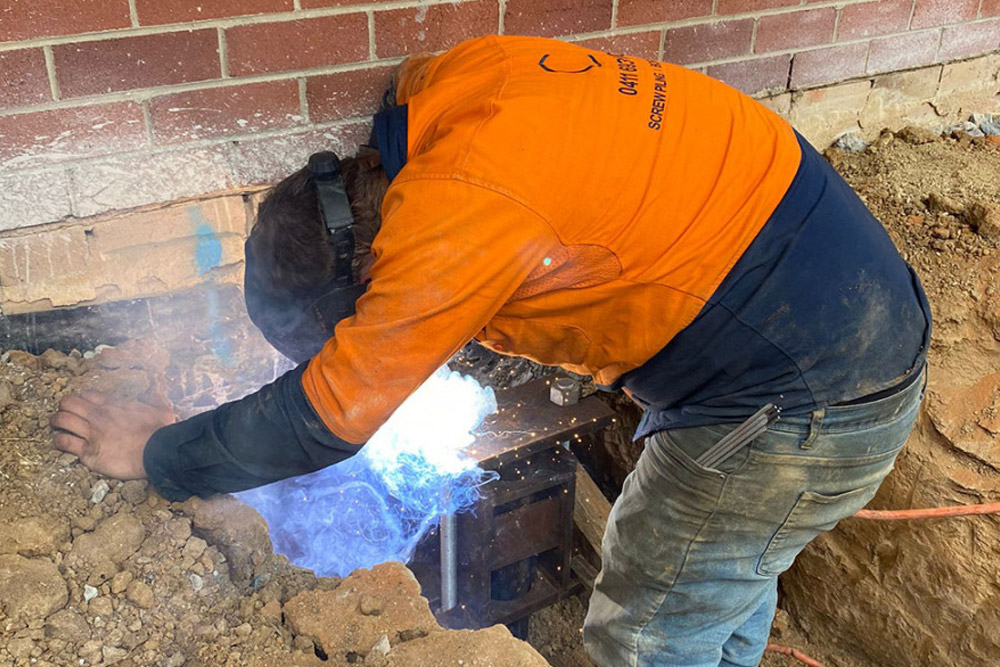Homeowners often take their foundation for granted — until something starts to go wrong. The foundation is the most critical part of any structure, and even minor issues can signal the beginning of larger, costlier problems. Knowing the signs that you need to call an underpinning engineer can save you money, protect your property, and ensure the safety of everyone inside.
Cracks in Walls and Floors
One of the first visible warning signs of a foundation issue is cracking. These cracks might appear on interior walls, especially around door frames and windows, or on your flooring. While hairline cracks due to settling are common in many homes, wide or jagged cracks that continue to grow over time are not normal. If you notice diagonal cracks or ones that form a stair-step pattern in bricks or blocks, it may be time to investigate further.
Doors and Windows That Stick or Won’t Close Properly
If your doors or windows suddenly start to jam, don’t assume it’s just humidity or warped wood. Shifting foundations often cause frames to become misaligned, making it hard to open or close doors and windows. When these issues appear alongside wall cracks or sloping floors, it’s a clear indicator of structural movement underneath.
Uneven or Sloping Floors
If your once-level floors begin to slope or feel bouncy and uneven as you walk across them, it could be a red flag. This might indicate the soil beneath your foundation has shifted, causing parts of your home to settle at different rates. While some movement is normal in any building, a noticeable change in the floor’s level warrants professional inspection.
Gaps Between Walls, Ceilings, or Baseboards
You may start to notice separation between your ceiling and walls, or between walls and baseboards. These gaps signal that your foundation is no longer providing consistent support. In some cases, you might even see sunlight through exterior wall gaps, which is a serious concern and should be assessed immediately.
Water Intrusion in the Basement
Frequent or unexplained water leaks in the basement can also point to foundation trouble. When the foundation shifts or cracks, it can create paths for water to enter. Water intrusion leads to mold, mildew, and further structural damage over time. Proper drainage is key, but if the water keeps finding its way in, your foundation may need reinforcement.
Bowing or Bulging Walls
In more advanced stages of foundation failure, you might see basement walls that are bowing or bulging inward. This is typically due to excessive lateral pressure from surrounding soil, especially in areas with poor drainage or heavy rainfall. It’s a significant structural risk and usually demands immediate engineering intervention.
When any of these symptoms persist or worsen, homeowners often reach out to specialists like NadeauSDM underpinning engineers who can assess the issue and recommend tailored solutions. Underpinning is the process of strengthening and stabilizing the foundation by extending it deeper into more stable soil, ensuring long-term structural support.
When to Act
It’s easy to dismiss early signs as minor annoyances, but foundation problems rarely fix themselves. Delaying action can lead to escalating repair costs and compromised safety. The best time to consult an underpinning engineer is when you first suspect an issue — not when it’s too late.
Conclusion
Foundation issues can be subtle at first but devastating over time. Cracks, sticky doors, sloping floors, and water intrusion are all early signals that your home’s stability could be at risk. Addressing these signs promptly with the help of a qualified underpinning engineer can protect your investment and bring peace of mind. Being proactive isn’t just smart — it’s essential.

